There is a small furry animal in Africa that prefers a secretive nocturnal lifestyle. Its scientific name is galago, but the locals call this creature bush baby. What is a galago? Why are they called bushbabies? Why are they so adored, and where can you find them? Can you keep one as a pet? - We will tell you everything about these unusual animals in our article.
Galagos - cute little bush babies
If you stay in the African countryside away from the big cities and take a stroll outside late at night, you can often hear noises remotely resembling intermittent baby cries coming from the nearby bushes and trees. Those who do not know the local animals will guess that it must be monkeys making these sounds. However, these are galagos, nocturnal animals that live in the tree hollows. They will howl all night long. Sometimes to assert their territory. And sometimes to communicate and warn each other of danger. You will quickly get used to their cries and stop paying much attention.
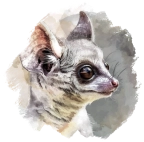

Galagos are fluffy animals with huge eyes. This makes them look very cute - as if a Japanese animator drew them. Their second common name is bush baby. It refers both to the sound they make and to their cute appearance. In Afrikaans, they are also called nagapie, which means “night monkey”. This is perhaps a compliment for the galago. Because although they are technically primates, they do not quite reach the level of intellect that many other apes and monkeys are known for.
In addition to their funny name, big eyes, and passion for making cries in the night, bushbabies are distinguished by their large ears and outstanding agility. They can jump from branch to branch with ease and feel truly at home on the trees. They prefer to live in small family groups. In addition, galagos are omnivores. This means that they are excellent hunters and foragers. Indeed, these are interesting animals that are very fun to observe. However, it is not always easy to do. Firstly, during the day they hide among the branches, not giving away their presence and carefree sleeping. At night, it is difficult to see them as well. Stealth is another trait that accurately characterizes these night monkeys.
Is a bushbaby a lemur?
Unexperienced travelers often confuse it with a lemur. And no wonder - lemurs are much more well-known. Not least because of the “Madagascar” animated franchise. Many of us know the charismatic King Julien and his assistants. Lemurs are indeed related to bush babies, but they are not the same. Lemurs live only in Madagascar and Comoros. The habitat of the galagos is spread around continental Africa south of the Sahara desert. Bushbabies also have other close relatives that dwell in tropical forests of Africa. Those are lorises, pottos, and angwantibos. Now let’s understand a little better who the galagos are before we start learning the most interesting facts about them.
Who is the bush baby? Is a bush baby a monkey?
Galagos are small nocturnal primates native to continental sub-Saharan Africa. All primates are scientifically classified into dry-nosed and wet-nosed primates. A wet nose in an animal is a sign of a good sense of smell. It allows one to instantly determine the speed and direction of the wind. In addition, it helps to pick up various odors at once and break them down. You've probably felt the wet noses of cats and noticed that the tip of a dog's nose is wet, too. But if you touch your nose, you will once again be convinced that it is dry. And so you must be classified as a dry-nosed primate (sub-order Haplorhini), like all other humans.
And we will find the galago in the neighboring suborder, Strepsirrhini (lower primates or “wet-nosed”). But the wet nose is not the only distinguishing characteristic. We can also notice that their thumb does not oppose other fingers so much and they have elongated “grooming” claws to care for their hair. In addition, bushbabies have a poor ability to distinguish colors. This is due to their predominantly nocturnal lifestyle. Galagos typically give birth to several babies at once. Interestingly, they have a smaller brain volume compared to monkeys and other placental mammals. In general, lower primates are more ancient creatures than apes, so they are more “primitive”.
Lower primates
Lower primates are divided into lemur-like and loris-like creatures. As we said before, all lemurs are endemics of Madagascar. They swam from continental Africa to that island several tens of millions of years ago and evolved there in isolation. In our time, several species of lemurs were brought by humans to the neighboring Comoro Islands. But they are not found anywhere else. Our galagos are hidden in the Lorisoidea superfamily, although they are not loris. As you can see, it is difficult to find these little guys not only in the shrubs of Africa but also in the classification tables.
Species of galagos. Related species
Two families make up the Lorisoidea superfamily. Lorisidae (lorises, pottos, and angwantibos), and Galagidae (galagos). And there are over 20 recorded species of galagos. Moreover, scientists are anticipating more new species to be discovered in the future. Try searching for photos of the galago on Google. You will see such a variety of appearances that it seems as if the different bush baby species are completely different animals. They live in different habitats, in landscapes of different types, and have different external characteristics and lifestyles. Sometimes it is even easier for biologists to distinguish the differences between the galago species by the sounds they make. Each species has its own set of cries ranging from squeals to squeaks for all occasions.
Describing every species of galago here would be quite lengthy. So we will only say that the largest of them, the Brown greater galago, reaches a maximum length of 47 centimeters (minimum - 26), while the body length of the smallest galago (Prince Demidoff's bush baby) varies from 7.3 to 15.5 cm. Among other unusual species, we can mention the Uluguru bush baby. It lives in Tanzania and Kenya at an altitude of up to 2000 meters. Another interesting one is the Zanzibar bush baby. It lives not only in Zanzibar but also in mainland Tanzania. Some rare species do not even have a popular name. For example, Sciurocheirus makandensis was seen only a few times in Gabon and is barely studied.
So what do we know about the better-studied species? How do these creatures lead their secretive lives hiding among tree branches?
How is the life of these nocturnal animals organized?
The galago's appearance and behavior correspond to their way of life. Big eyes are needed to catch maximum light at night and see in the dark. Good night vision is characteristic of all nocturnal animals. Bush babies have large delicate ears. They look like locators that can rotate independently of each other in all directions. Those ears help bushbabies orient in space, detect the enemy in advance, and hear signals from their relatives. During the day, while sleeping, the galagos fold their ears and press them tightly against the body. This helps to prevent sounds from disturbing their sleep. They do the same while jumping so that the ears don't touch branches.
The galagos have strong legs and arms, which make them excellent jumpers and climbers. They often grasp tree branches and pull up the small light body. Their weight varies from species to species but does not go out of the range of 50-1500 grams. Their flexible long tails help them balance as they move along branches.
Galagos leap from tree to tree with ease, deftly and firmly clinging to a pre-selected branch or palm leaf. These small animals can easily jump from tree to tree even if the branches are a couple of meters apart. Some species of galago are known to be able to make a five-meter-long jump! The muscles in their legs that are responsible for jumping work 6-9 times better than those of frogs. To quickly cover a long distance with a series of jumps is a usual thing for bush babies.
In short, these African animals are perfectly adapted to live high up in the trees. It is known that they rarely descend to the ground. At the same time, they satisfy all their needs at night, returning to shelters during the day and resting carefree in nests they have built, in hollow trees, or simply on a convenient tree branch.
Social behavior
Most galago species live in small groups or prefer to lead solitary lifestyles. This is especially true of male bush babies. Females, on the other hand, live with their offspring. And as the infants grow up, male offsprings leave and female offsprings remain, forming a natal group of relatives. In some galago species, males form bachelor communities. So their social life is not that poor. But more often galagos live individually. They mark their territory and strictly ensure that no one crosses its boundaries. To do this, they urinate on their paws and, moving them, climb trees, leaving traces of their scent. This behavior is referred to as urine washing.
At night, these small primates return to their nests made out of leaves and small twigs. In some cases, they use abandoned bird nests or even beehives. Sometimes, bushbabies while remaining solitary during the active night phase, form a kind of temporary community by sleeping near each other during the daytime. This is safer for them because if a predator gets close, the first galago to detect danger will wake up the others by crying.
What do the galagos eat and who eats them?
Diet of bush babies
Galagos are omnivores, although the set of preferred foods varies slightly from species to species. But if we talk about bushbabies in general, we’ll get the following diet:
- Tree gum
- Flowers, seeds, leaves, and other vegetation
- Various fruit
- Insect prey like beetles and moths
- Small rodents
- Frogs and lizards
- Small birds and their eggs
Thanks to their agility and large almost bat-like ears, bushbabies can hunt insects with little effort. They can see well in the dark and can track and catch insects that just fly by.
So far it seems like these little guys are pretty comfortable in their natural environment, isn’t it? Insects fly to them on their own, there's plenty of plant food in the tree crowns that you can pick up just passing by, nutritious sap oozes from the trees, and birds live and nest nearby. Besides, it is safer on tree branches than on the ground. However, the galago still has natural enemies.
Their enemies
Bushbabies are hunted by mongooses, genets, snakes, owls, common dogs and cats, and jackals. Primates such as blue monkeys have also been spotted hunting bushbabies' infants. There is evidence of chimpanzees preying on the galagos too. As superior primates and closest relatives of humans, these apes even made primitive weapons that were used to kill bushbabies.
The famous chimpanzee researcher Jane Goodall was the first to notice in the 1960s that these clever apes were making tools such as sharpened sticks for extracting termites from their high mound dwellings. Chimpanzees have also been known to excitedly and efficiently hunt colobuses. In our days, Chimpanzee attacks on bushbabies have been documented many times: a chimpanzee breaks off a branch, makes a sharp stick out of it, sharpens the end with his teeth, and then gets up to the hollow with the sleeping bushbabies during the day, pokes the pointed stick inside several times and takes out the immobilized body of the galago.
It is amusing that scientists are arguing over whether to call such a weapon a spear or a club. On the one hand, the sharpened stick does resemble human spears. But chimpanzees do not throw them as primitive humans did but simply thrust them into the victim. In any case, the practice is often successful. Long (up to 60 centimeters) sharp sticks help chimpanzees hunt lower primates.
Where do the galagos live?
Bushbabies can be found in a variety of places in continental Africa south of the Sahara. Excludes the desert northern part with its barren environment, unsuitable for these tree dwellers. Of the islands, only some small and closest to the continent fall into their range. But you wouldn't find them in Madagascar.
Most species of the galago prefer to live closer to forests. But it is common to hear and see them in the scrubland near villages and towns. They were even spotted in some urban areas. Some species live in drier areas, having adapted quite well to the savannah. A few species are known to thrive in grasslands with shrubbery. The African Wildlife Foundation considers the galago the most successful of all lower primates. The main reasons are this species' diversity, overall abundance, and vast range.
Galagos near human populations
Bushbabies have also learned to get along with humans, getting quite close to their homes. To see them, you often do not need to go deep into the African wilderness. Just choose a hotel located among lush greenery with abundant trees and bushes. A perfect example is Aishi Machame Hotel, owned by Altezza Travel. It is located in a green buffer zone of Kilimanjaro National Park in northern Tanzania. This area is the heart of East Africa and home to several species of galago.
Bush babies are regulars at Aishi Machame Hotel
It might seem a little odd that we recommend a regular 3-star hotel out of all the locations in Africa for galago watching. But it really is a good place to watch bush babies. Here they are plentiful, active, easy to hear and even to see if you have a little patience.
Aishi Machame Hotel stands on the bank of the Weruweru river, which carries its waters directly from the great African Mount Kilimanjaro, and takes its source from the volcano’s largest glacier - Furtwängler. The town itself is called Machame - it is located not far from Moshi which is famous among the climbers of Kilimanjaro. The hotel is buried in verdure, with large trees and tropical plants. So the animals are accustomed to guests walking in the gardens. During the daytime, blue monkeys frolic in the tree branches and on the balconies of the hotel, sometimes even peeking through the windows of the guests, and at night the bushbabies wake up and start their games.
Wildlife seems to feel at home in Aishi Machame. Their ease suggests a welcome for the guests' gaze. Squirrels frolic on banana leaves. Hornbills glide to the grand ficus. By the offices, owls serenade. Geckos venture boldly indoors. Nighttime may reveal bushbabies and mongooses to the fortunate.
Evenings resound with bushbaby calls. These you can capture from your window. Venture to the bamboo near the pond for a sight. There, amid trees, the galagos feast. Fruit, provided by the staff, lures them. Watch as they dash, snatch a morsel, and retreat. Occasionally, a bush baby lingers, granting a photo op to the lucky.
Taking pictures of bush babies
For photo-hunting, galago safaris are not very suitable. In the daytime, these animals are not active, and they hide perfectly well in the dense trees. But many other African animals can be admired on a trip across the savannahs in an off-road vehicle. We recommend going on a safari tour for as many days as your vacation allows. This way you can visit several national parks and many interesting remote areas. You will see many different animals and even begin to notice their different behavioral patterns. But nocturnal and secretive animals such as bushbabies are better observed on the hotel grounds.
Galago and humans. Are bush babies rare?
In addition to peaceful forms of interaction, human activity can harm these little primates. In general, their conservation status is of the “least concern”. Although for some species a decrease in populations or a decrease in habitat areas is recorded. Here humans affect bushbabies indirectly by expanding farmland or cutting down forests. This leads to the direct expulsion of animals from their native environments. And also to a decrease in the food supply for the galago populations.
Domesticating bush babies
Another issue on the part of humans is trying to domesticate these wild animals and keep them in our homes. This desire is understandable. A small fluffy animal with big cute eyes seems like it could make a good pet. However, it is a really bad idea.
A renowned zoologist, director of the Frankfurt Museum and author of "Serengeti Shall Not Die" Bernhard Grzimek had a pet bushbaby. Here is what he says in his book: “Lest too many people write and ask me to supply them with bushbabies, I had better mention that they have one very distinct drawback — the inelegant habit of urinating on their hands and feet, rubbing them together and then jumping directly at your face with wet palms. All the walls and the furniture which they touch become “perfumed” and, unless a window is kept permanently open, the stench is considerable.”
Galagos are wild animals adapted to their natural environment. In captivity, however, they feel unwell, and pick up various diseases. Especially after interacting with other species, they don’t encounter in their natural habitat. Galagos are social animals. So, they need their own kind around to feel good and stay healthy.
There is an ethical problem in keeping bushbabies at home: tearing a wild animal out of its natural habitat and confining it to an apartment or a house with artificial objects is a form of violence against a living creature. For a galago, no amount of human effort and care can replace the freedom and benefits of its natural habitat, for which evolution has been preparing these creatures for tens of millions of years. The desire to have an exotic animal as a pet is often just a selfish desire to stand out among other people, without much consideration of negative consequences for the animal and its owner.
Many countries prohibit keeping galagos in homes. We at Altezza Travel, being a responsible Tanzanian tour operator, fully share this approach and ask you to think about the possible suffering of animals before making rash decisions. Africa's wild animals should remain in Africa. Humans can come to visit and admire them by visiting the beautiful national parks and other protected areas teeming with wildlife. Come to Tanzania and we will show you the cute bushbabies and many other inhabitants of the local ecosystem living harmoniously in their natural environment.
All content on Altezza Travel is created with expert insights and thorough research, in line with our Editorial Policy.
Want to know more about Tanzania adventures?
Get in touch with our team! We've explored all the top destinations across Tanzania. Our Kilimanjaro-based adventure consultants are ready to share tips and help you plan your unforgettable journey.















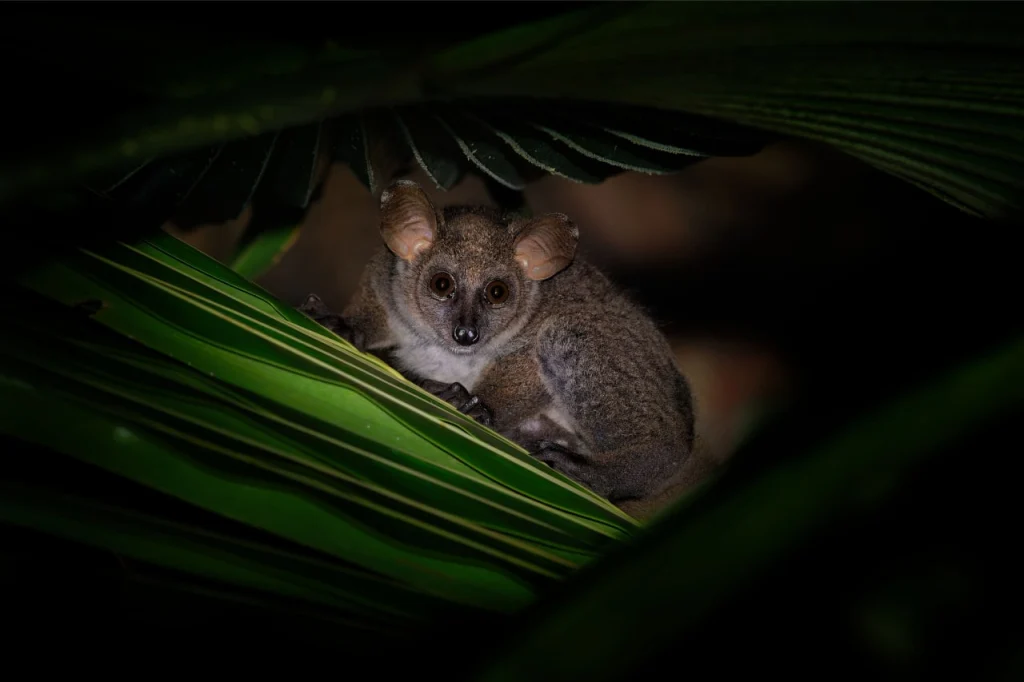
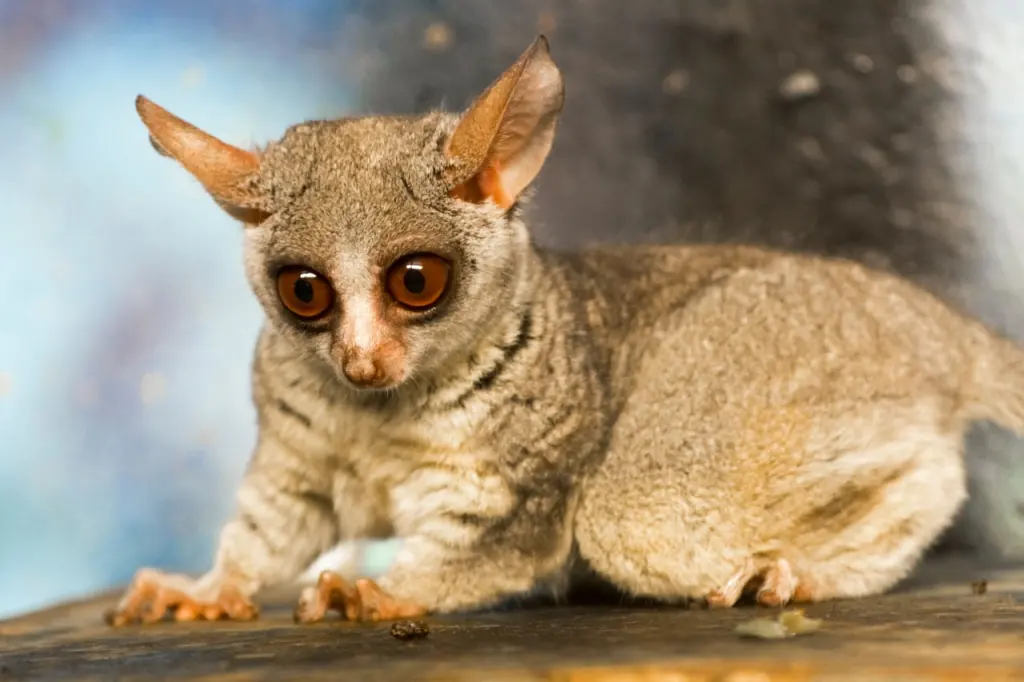

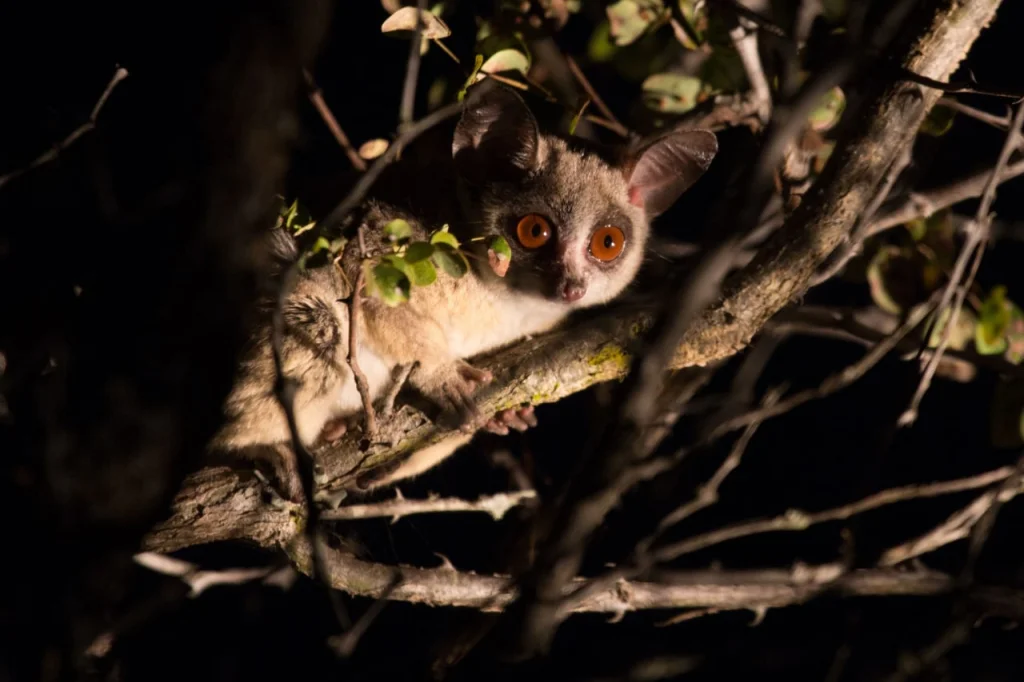



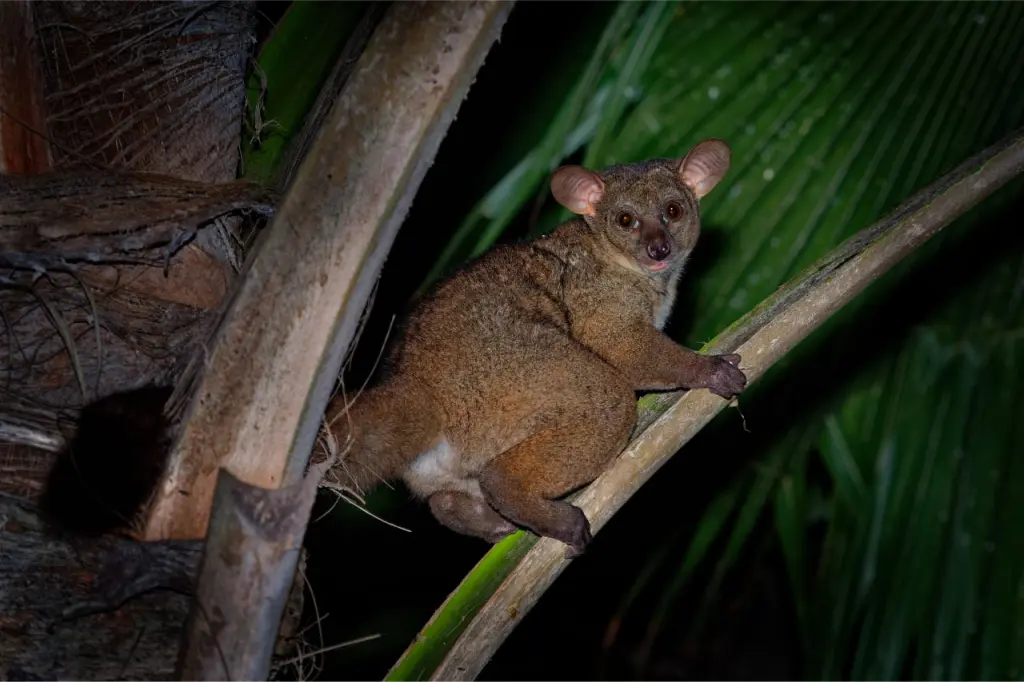




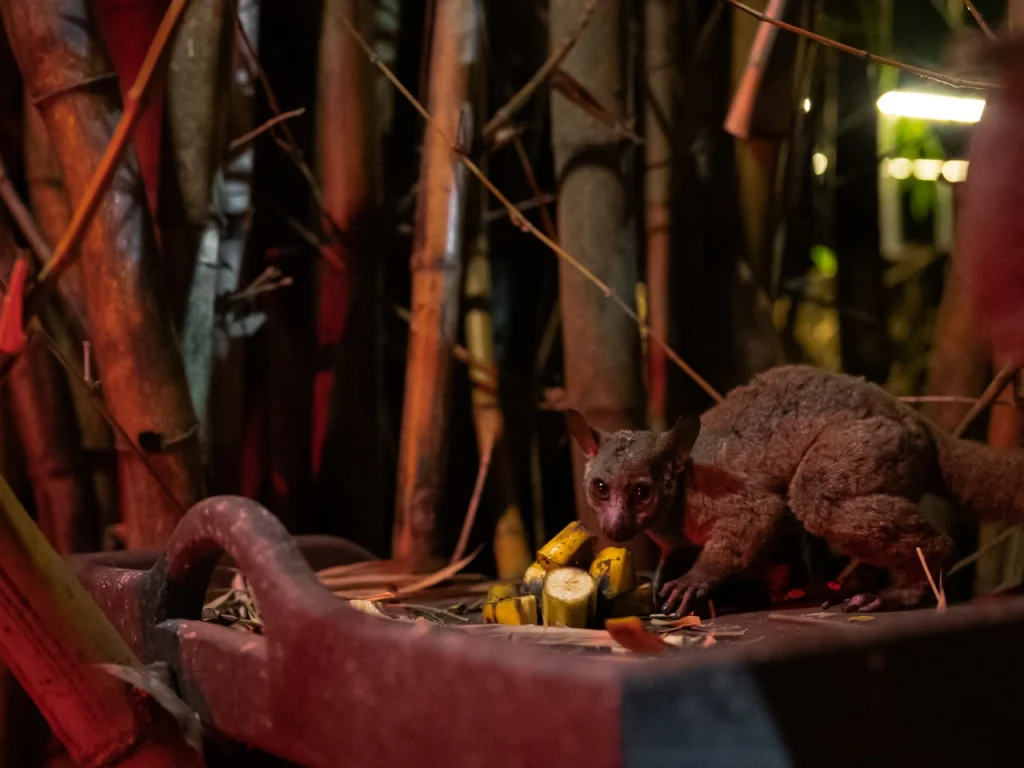
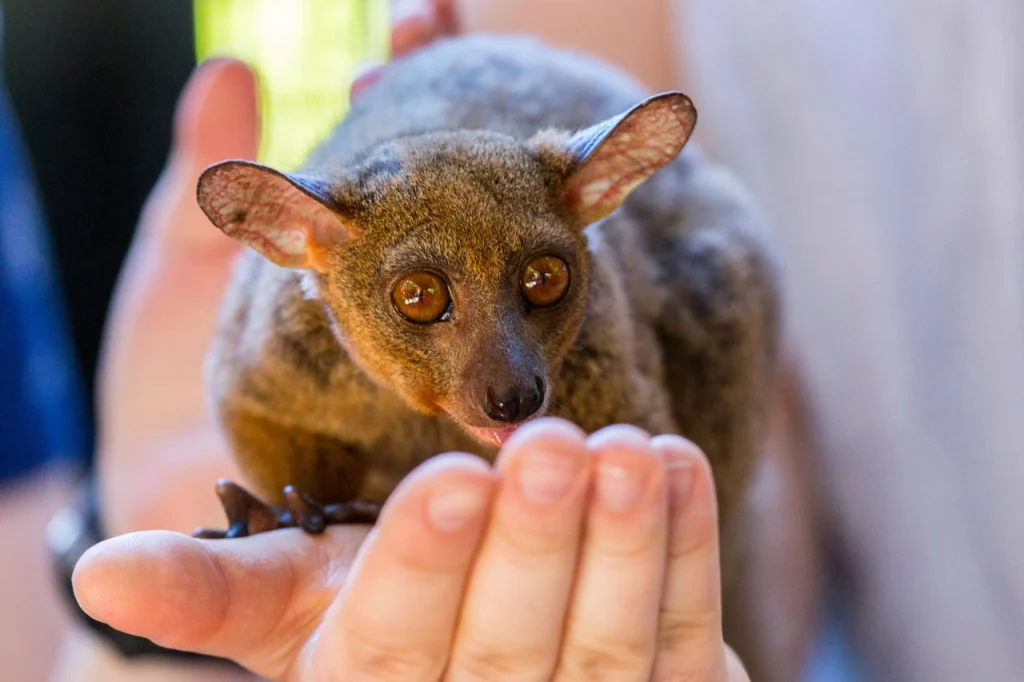
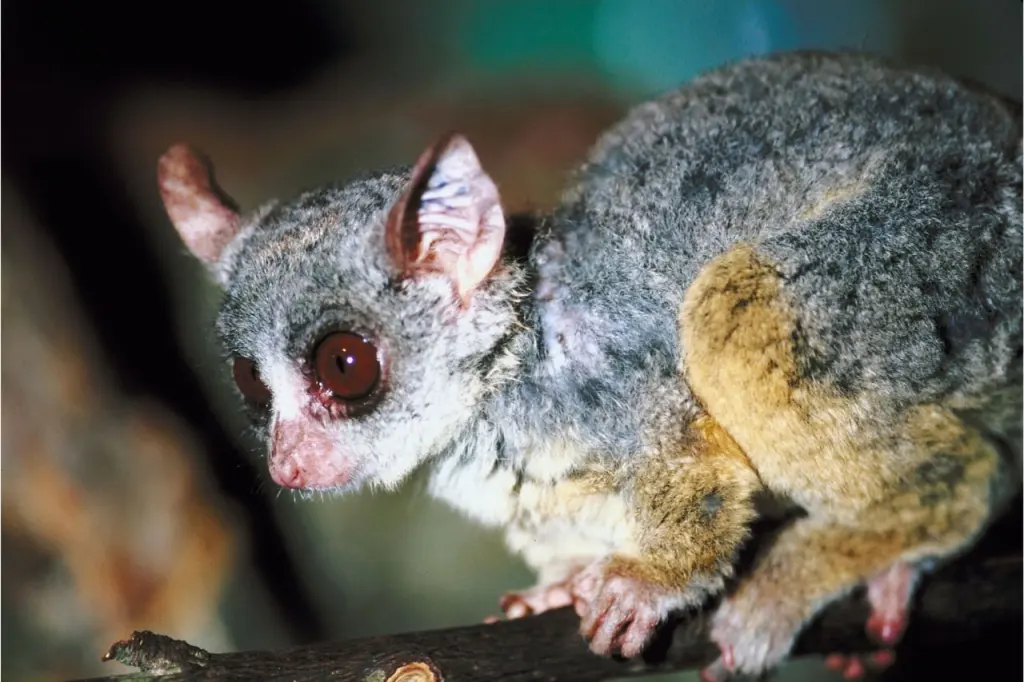

And all the serious information is really cool alongside their cuteness, Discovery channel style!
So cute guys!:) Wish to see one soon!